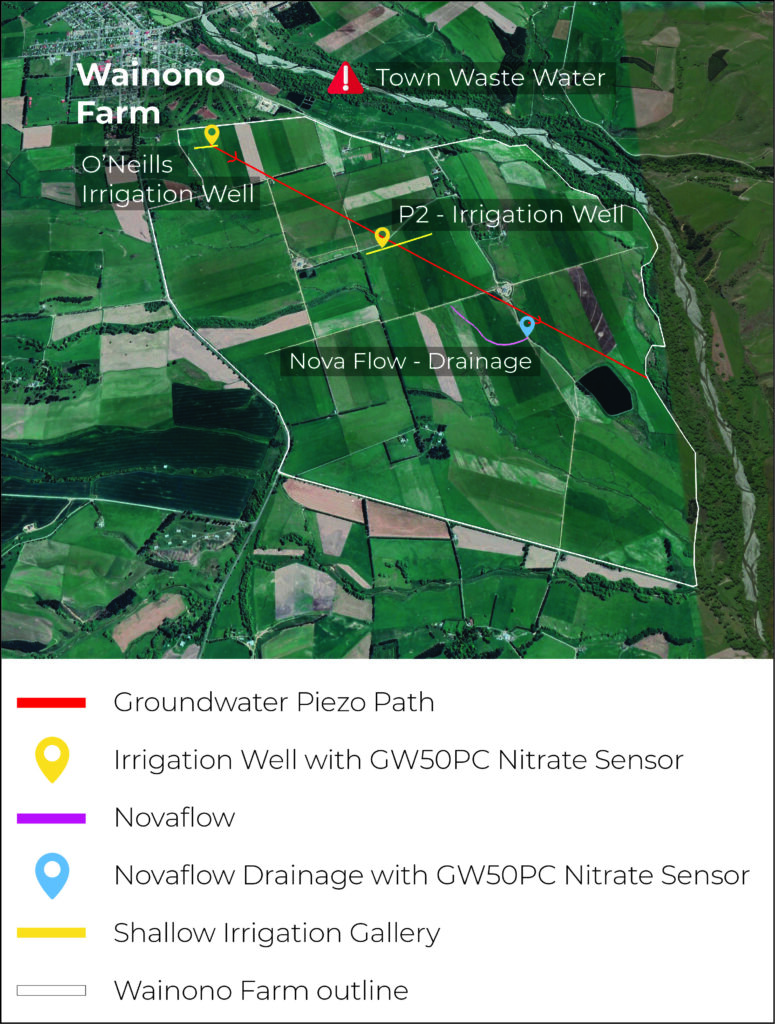This article first appeared in our sister publication, Dairy Farmer.
New real-time insights into what’s happening with nitrate levels and dynamics beneath the surface of a South Canterbury farm have revealed invaluable data that could lead to changes in grazing management and fertiliser application.
The findings come from a one-year research project led by Our Land and Water Rural Professionals Fund and primary sector consultancy The AgriBusiness Group on the 672ha Wainono Dairy Farm, near Fairlie.
The farm is in a high nitrogen concentration area, something managing director John Wright takes seriously. He has been taking quarterly water samples for 10 years but found that didn’t really help him understand what was happening with nitrate concentrations.
“I didn’t know if a spike or a dip was a one-off or part of a pattern,” Wright says.
Wainono installed three nitrate sensors along the groundwater flow direction to compare upper, middle, and lower farm nitrate levels and dynamics. The data is uploaded to a HydroMetrics portal and is available in real time.
“I access the data every three of four days and always before and after a weather event,” Wright says.
It only took two months for the power of real time information to be revealed.
“Levels are going up and down quite a bit, as we suspected from the quarterly spot samples we took previously, but now we can go much further and identify trends.
“I can see the potential in terms of how we manage grazing and when and where we fertilise.”

The findings have been shared with the local irrigation company, catchment groups, community stakeholders, rural professionals and Te Rūnanga o Arowhenua, the local iwi.
AgriBusiness Group consultant Charlotte Senior says the project identified where large nitrate spikes come from.
“It was clear drainage from big rainfall events was the main driver behind nitrogen losses.”
The sensors also showed high nitrate levels in the groundwater coming onto the property from upstream and taking about two days to show up at the bottom of the farm.
Wright says the sensors have helped identify groundwater problems, and probable causes.
“We see this data as a way of informing any environmental measures we take, such as riparian planting. Over time, we will be able to see if our planting really does make a difference.”
It also set the farm up for any future regulatory requirements.
“We are creating a rich baseline data set of nitrate levels over time prior to a regulator requiring the information for compliance purposes.
“We will have way more valuable data than that provided by spot grab sampling and also a thorough understanding of the nitrate levels across our farm.”
At the end of the project Wainono Farm purchased the sensors so it could keep collecting the data and help the local community gain further insight into what affects nitrate levels.










